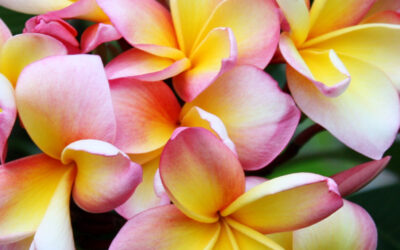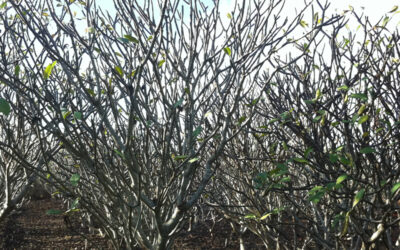
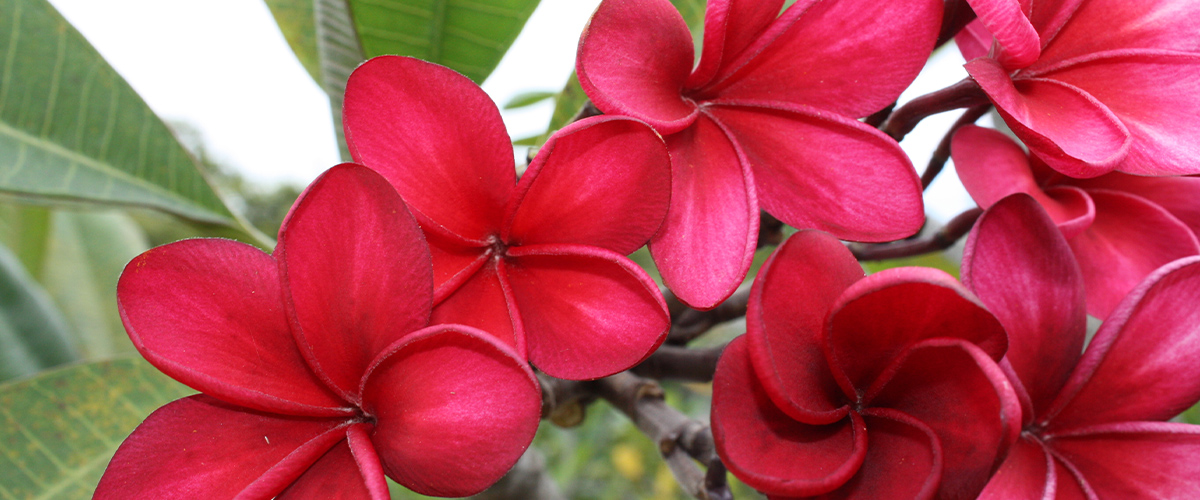
Some call them Frangipani. Some call them Plumeria. But what’s the story behind these beauties?
Where did the Frangipani tree originate?
Most people are transported to Hawaii or the islands when they think of frangipani. The Hawaiians made the frangipani famous in their use of the flowers for their ceremonies, but this is not where they originated. As odd as it sounds, the gorgeous frangipani came from parts of greater Asia, Mexico, Central America, Venezuela and the Caribbean. There are eight unique species of frangipani that specifically originate from the Americas. Also, there are related flowering plants in the same family with frangipani-like flowers, but instead, they grow as vigorous creepers, and some are bulbous at the base, standing upright, resembling palm trees.
How was the Frangipani name created?
The flower is known by two name references, Frangipani and Plumeria, and there is a story behind each name. First, frangipani was the name given to an Italian fragrance created in the 16th century by the Marquis Frangipani. When the Italians started to cultivate and source flowering plants from around the world, this group of plants with their lovely aroma reminded them so strongly of the perfumes they were creating, that the name stuck and a whole new era of cultivation ensued.
Then in the 17th century, the Plumeria was named after a French Botanist and Catholic Monk who travelled the world and loved discovering and documenting new plant species. His name, Charles Plumier, goes down in history.
Frangipani are also commonly called the “Hawaiian Lei flower”, Melia in ʻōlelo Hawaiʻi (Hawaiian language). The plants were transported across the pacific by early travellers who used the frangipanis in their ceremonies, including in everyday life and for medicinal purposes.
Check out this video from a tv news report in Hawaii about the frangipani.
I have been lucky enough to have visited a number of the perfumeries in France. What I can say is that the pure frangipani essence, sourced from around the globe underpins many of the most sought after perfumes in the world.
Meet the Anacardiaceous Family, also known as the Plumeria Genus.
The Plumeria Genus is made up of approximately 12 species. They are mainly deciduous, or semi-evergreen shrubs and small trees, and they have simple, smooth-edged leaves on fleshy branches. Typically the flowers have five petals, a milky poisonous sap and are self-supporting sub to sub-tropical plants. The frangipani reaches about eight metres in height and can spread as wide as 4.5 metres. They are slow-growing and in cooler climates can take longer to reach maturity.
What are some of the varieties?
At Fancy Frangipanis we have over 120 named selections of Plumeria Rubra whose flowers exhibit different colour combinations, fragrances and shapes. In our breeding program we have over 2000 natural hybrids under evaluation for release in future years. From the genus Plumeria we currently have Plumeria Peduca, Sericifolia, Obtusa and a number of natural hybrids in our breeding program.
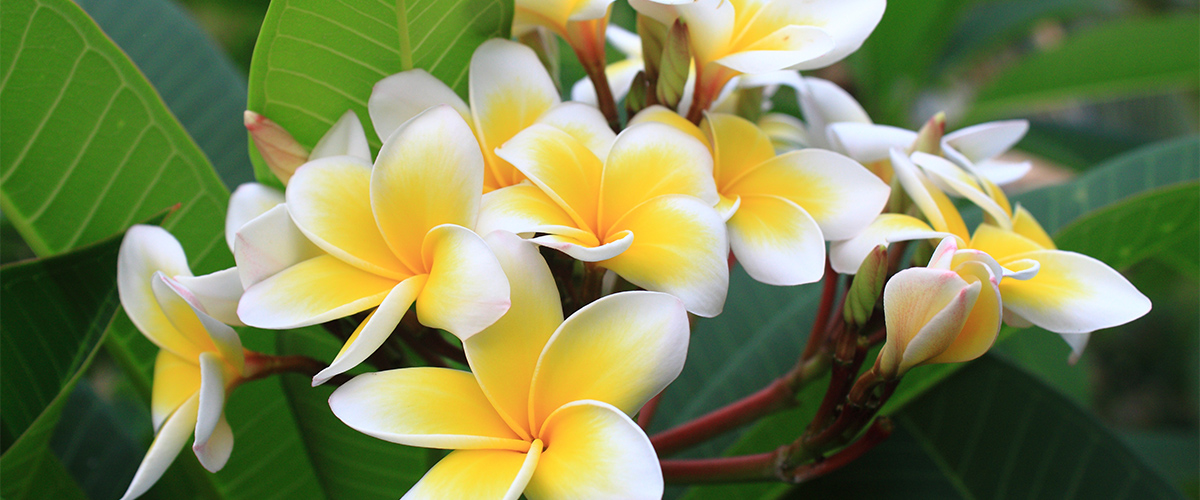
P. Rubra (pronounced “roo-bra”) Acutifolia are the white-edged yellow flowers of the Mexican frangipani and are commonly used in the Hawaiian lei.
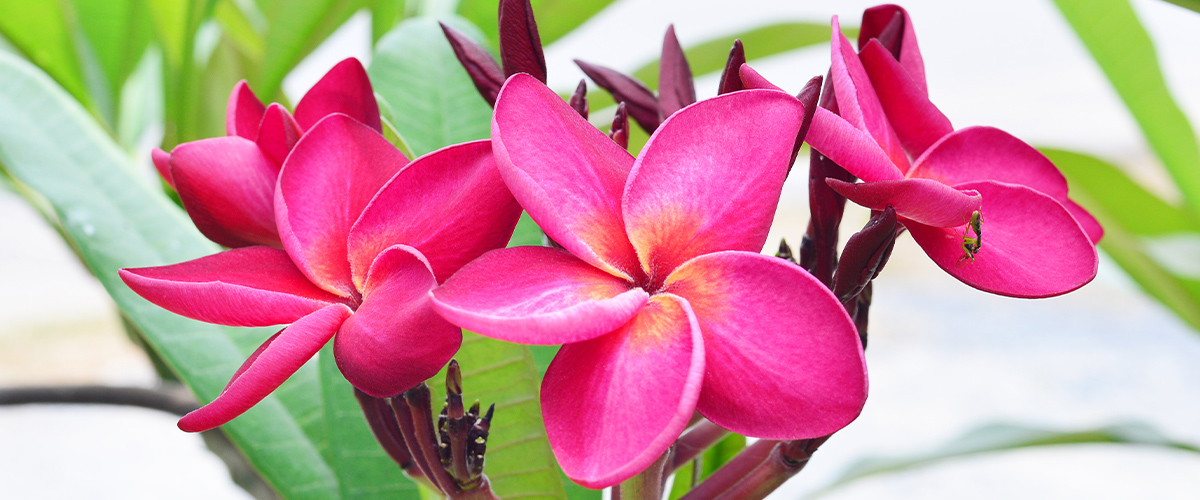
Frangipani rubra, also known as Plumeria rubra or P. rubra are the most common frangipani. They come in a variety of colours, from white to cream to yellow, oranges and pinks, including pale and hot pink, reds and even deep cerise. And if you can’t choose a favourite they come in multi-coloured hues such as pink, apricot and yellow. The flowers produce soccer-ball-sized bunches of flowers in the vibrant tropical sunset tones of red, pink, gold and yellow. And the Rubra have the most divine smelling fragrances out of all the frangipanis.
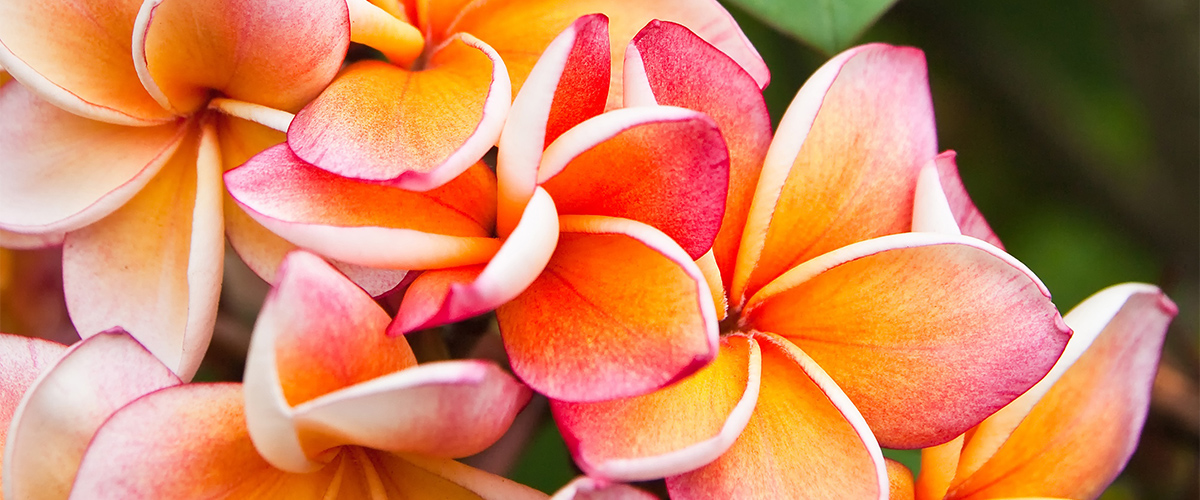
Tricolour frangipani is after named Charles Plumier, and in Australia, we call them ‘Fruit Salad’. They derived their name due to the colours of each petal displaying an orange appearance from a distance. Then on closer inspection, the fragrant flowers are pink with a white and yellow blush, representative of the term, fruit salad. The origin is said to have come from Australia.
This next frangipani is used extensively in ceremonies and found traditionally in places such as peaceful gardens, temples, memorials and churches where it is used in weddings. I have images of my mother getting married in Papua New Guinea and her bouquet, church displays and the grounds were covered with the lovely flowers of the plumeria obtusa.
Although known as Singapore White or evergreen white, the obtusa species has been hybridised over the years with a dwarf selection known as Dwarf Singapore Pink. Also known as Petite Pink which grows to one to two metres with pale-pink, pinwheel-shaped flowers. Other new hybrids display shades of pink, crimson, yellow and white combinations. Obtusa comes from the latin word ‘blunt’ referring to the blunt end of the leaves.
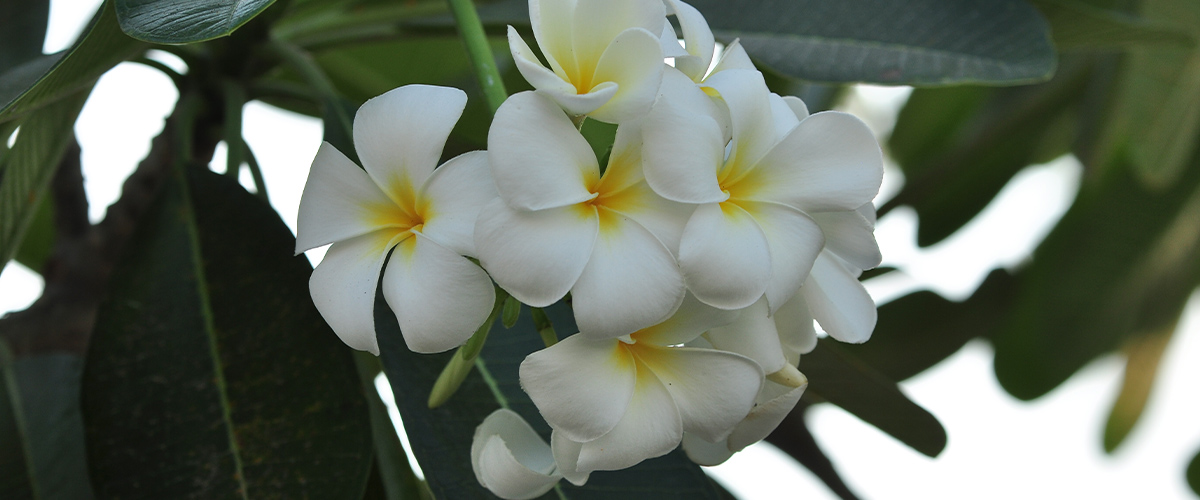
Golden arrow, Plumeria Pudica, Pudica meaning pure in Latin, referencing the white coloured flowers. It has a long flowering season that displays a white bloom with a yellow centre. They are also known as the ‘Hammerhead’ or ‘Everlasting Love’ frangipani. Ideal for screening, large pots, fences and hedges.
Much of the frangipani range enjoyed today are all thanks to Bill Moragne Senior. Bill was a medical doctor and loved frangipanis. He developed one of the first cross breeding techniques to hybridise frangipani and plants from his original seedling crosses, where subsequent plantings of natural hybrids continue to inspire enthusiasts around the world.
On a personal note
I visited one of the oldest plantations of frangipani in a historic botanical garden on main island of Oahu in Hawaii. This planting was awe-inspiring. It contains many of Bill’s selections, species from around the world and selections from many of the early enthusiasts that he inspired. These trees tower above you and carpet the ground under them with the most amazing display of flowers that blanket the landscape. The botanic gardens are nestled in an old volcanic crater and is a must do for enthusiasts who visit Hawaii, especially if you want to see first-hand a forrest of frangipanis.
These are just a few of the frangipani varieties that are available. Have a chat to us or go online to our store and browse the images in the plant selections section of our Fancy Frangipanis website about your favourite colour and we’ll guide you through your frangipani choices.
Cultural significance
There are 100s of different shapes and colour combinations, where the flowers evoke different emotions and nostalgic memories, depending on the culture.
- In Australia, they are known as backyard survivors, beating near-death experiences. Their beautiful fragrance is a reminder of tropical holidays and special times with those we love. Everywhere they are grown, fallen yet still fresh flowers are scattered in pools and bowls as a finishing touch before special events, and brides especially love them in wedding bouquets.
- The Maya and Aztec associate the frangipani with deities of fertility and life. Elite status Nobles are said to have had them planted in their garden to represent their important stature.
- To indicate relationship status, Polynesian culture are said to wear frangipanis over the right ear if they are single and ready to mingle, and wear frangipani over the left if they are in a relationship.
- In Sri Lankan culture, frangipani are flowers used in worship.
- When frangipani is given to another person in Eastern Africa it is considered a Swahili love poem.
- The incense called ‘Nag Champa’ from India has the fragrance of the frangipani included in its blend.
Whatever you choose, it’s the right choice, because frangipanis are timeless and uniquely stunning. Their fragrance can be smelt wafting through the summer breeze here in Australia. So contact us at Fancy Frangipanis today and we’ll share with you some of our favourite frangipanis.
Recent Posts
Frangipani flowers love summer. The Aussie Christmas Tree.
“Summer loving had me a blast. Summer loving happened so fast…Summer days drifting away, to, oh,...
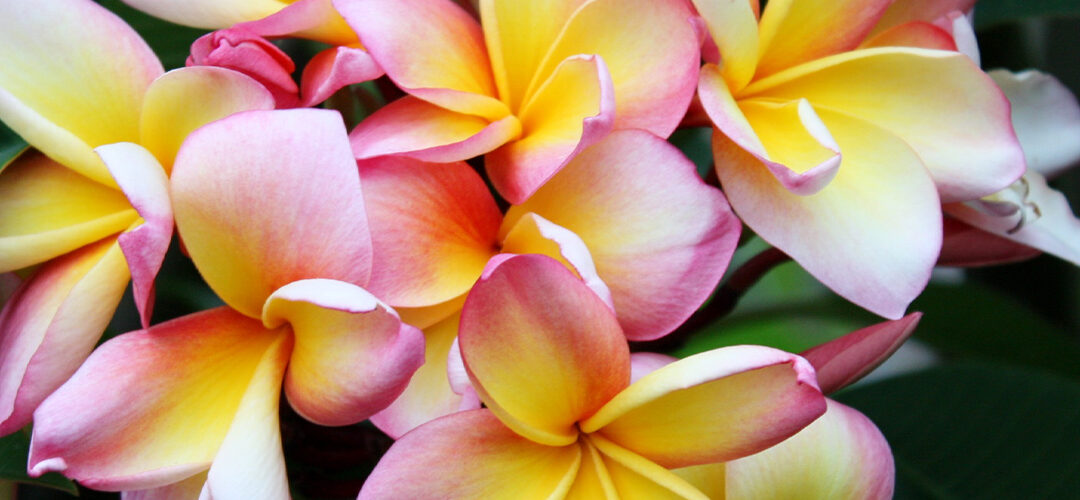
Frangipani flowers love summer. The Aussie Christmas Tree.
“Summer loving had me a blast. Summer loving happened so fast…Summer days drifting away, to, oh,...
Make a frangipani lei. Relive memories. Frangipani bridal bouquet.
Exotic frangipani blooms and displays transcend to a sweet place.The frangipani bloom is heralded...
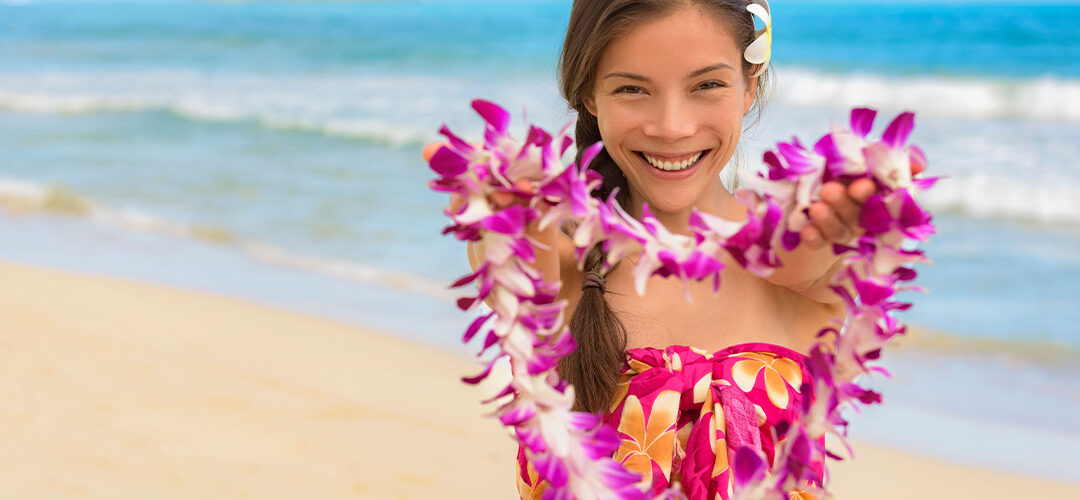
Make a frangipani lei. Relive memories. Frangipani bridal bouquet.
Exotic frangipani blooms and displays transcend to a sweet place.The frangipani bloom is heralded...
My frangipani has no leaves! Help!
My Frangipani is losing its leaves and flowers and is naked. Why?First of all, it’s ok! Your...
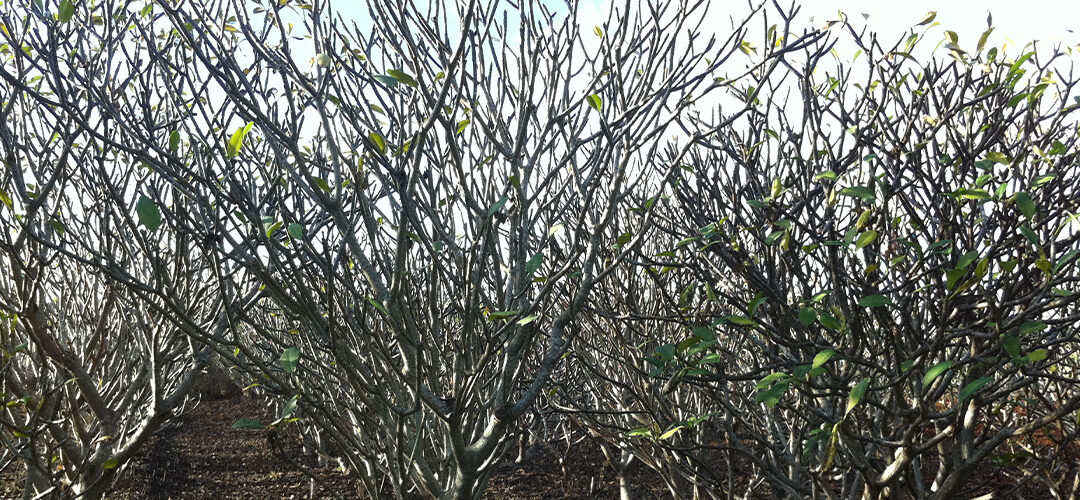
My frangipani has no leaves! Help!
My Frangipani is losing its leaves and flowers and is naked. Why?First of all, it’s ok! Your...


